Are you tossing and turning all night, wondering why quality sleep feels so elusive? The secret to transforming your restless nights into deeply refreshing slumber might be hiding in plain sight—right in your bedroom. Your sleep sanctuary holds incredible power over your sleep quality, and with the right bedroom optimization strategies, you can unlock the restorative sleep your body craves.
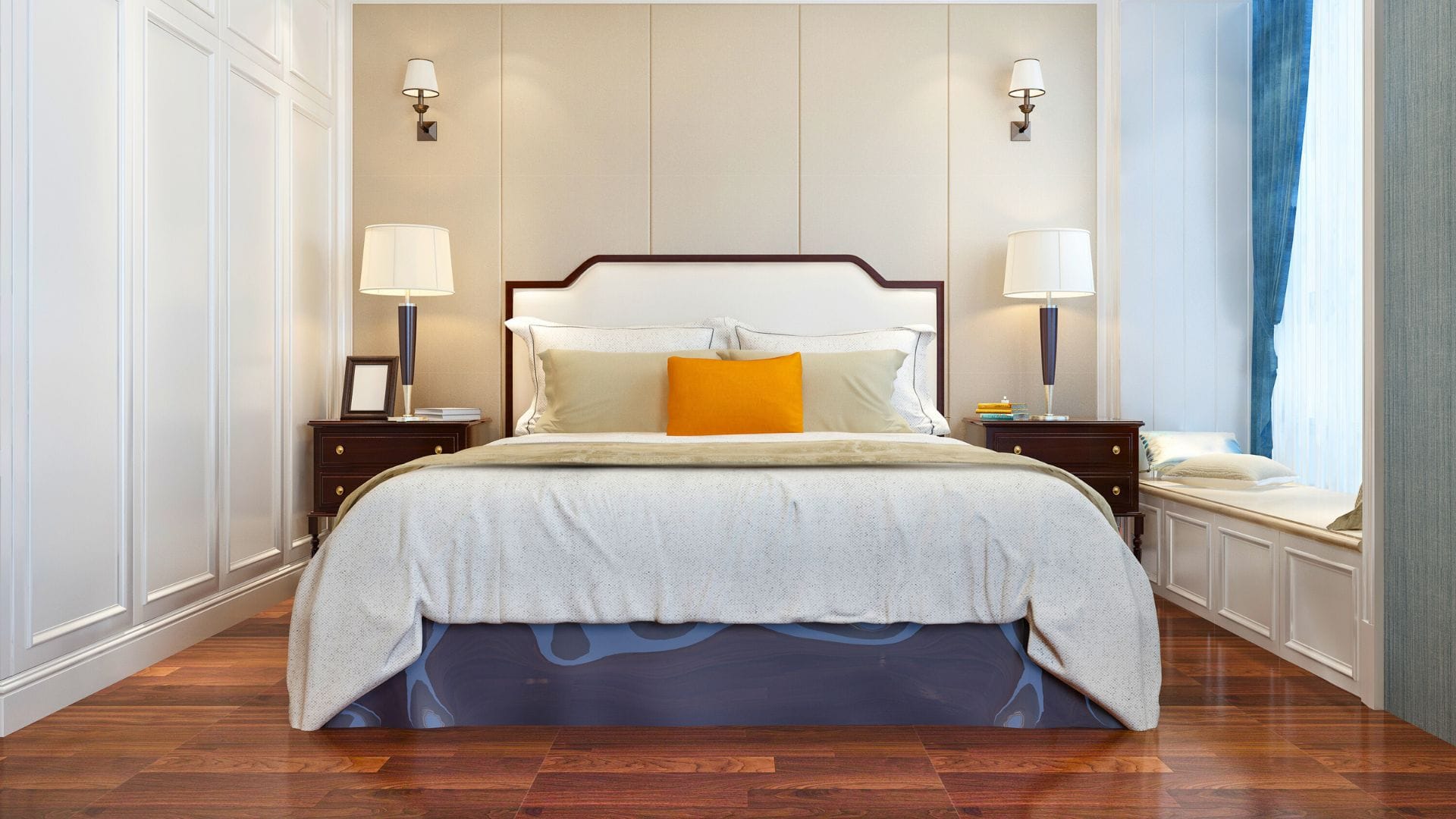
Sleep experts agree that your bedroom environment plays a crucial role in determining whether you’ll wake up feeling energized or exhausted. From the temperature of your room to the quality of your mattress, every element contributes to your overall sleep experience. Let’s explore six scientifically-backed methods to optimize your bedroom and achieve the refreshing night’s sleep you deserve.

1. Master Your Bedroom Temperature Control
The Foundation of Quality Sleep
Temperature regulation is perhaps the most critical yet overlooked aspect of bedroom optimization. Your body’s core temperature naturally drops by 1-2 degrees Fahrenheit as you prepare for sleep, signaling to your brain that it’s time to rest. When your bedroom is too warm or too cold, this natural cooling process gets disrupted, leading to frequent wake-ups and poor sleep quality.
The ideal bedroom temperature for most adults ranges between 65-68°F (18-20°C). This sweet spot allows your body to maintain its natural circadian rhythm while promoting deep, uninterrupted sleep cycles. However, personal preferences can vary slightly, so experiment within this range to find your perfect temperature.
Practical Implementation:
- Invest in a programmable thermostat to automatically adjust temperature before bedtime
- Use breathable, moisture-wicking bedding materials like bamboo or linen
- Consider a bedroom fan for air circulation, even in air-conditioned rooms
- Layer your bedding so you can easily adjust throughout the night
- Keep lightweight pajamas or sleepwear nearby for temperature changes
Pro tip: If you share your bed with a partner who prefers different temperatures, consider dual-zone electric blankets or separate bedding layers to accommodate both preferences without compromising sleep quality.
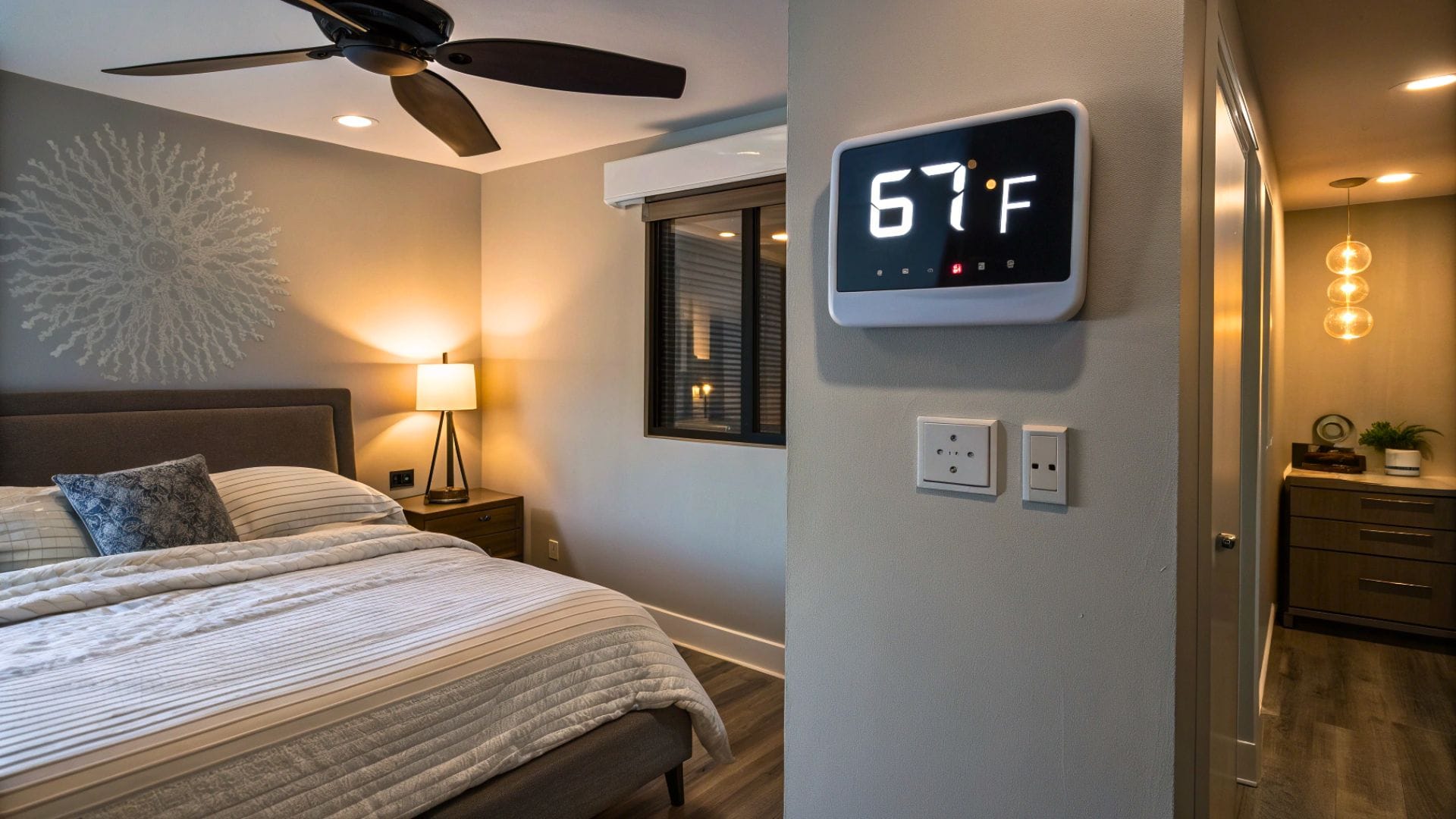
2. Create the Perfect Sleep Lighting Environment
Harnessing Light’s Power Over Sleep Hormones
Light exposure dramatically impacts your body’s production of melatonin, the hormone responsible for regulating your sleep-wake cycle. Exposure to bright lights, especially blue light from electronic devices, can suppress melatonin production for hours, making it difficult to fall asleep and achieve deep sleep stages.
Creating optimal bedroom lighting involves both eliminating disruptive light sources and introducing sleep-promoting illumination. Your goal is to signal to your brain that nighttime has arrived, allowing your natural sleep mechanisms to activate.
Practical Implementation:
- Install blackout curtains or blinds to block external light sources completely
- Replace bright overhead lights with warm, dimmable LED bulbs (2700K color temperature or lower)
- Remove or cover electronic device displays, including alarm clocks with bright faces
- Use red-light nightlights for nighttime navigation—red light doesn’t interfere with melatonin production
- Implement a “lights-out” routine 1-2 hours before bedtime
- Consider an eye mask as a backup for complete darkness
For shift workers or those dealing with street lights, light-blocking window film can provide an additional layer of protection while maintaining your view during daytime hours.
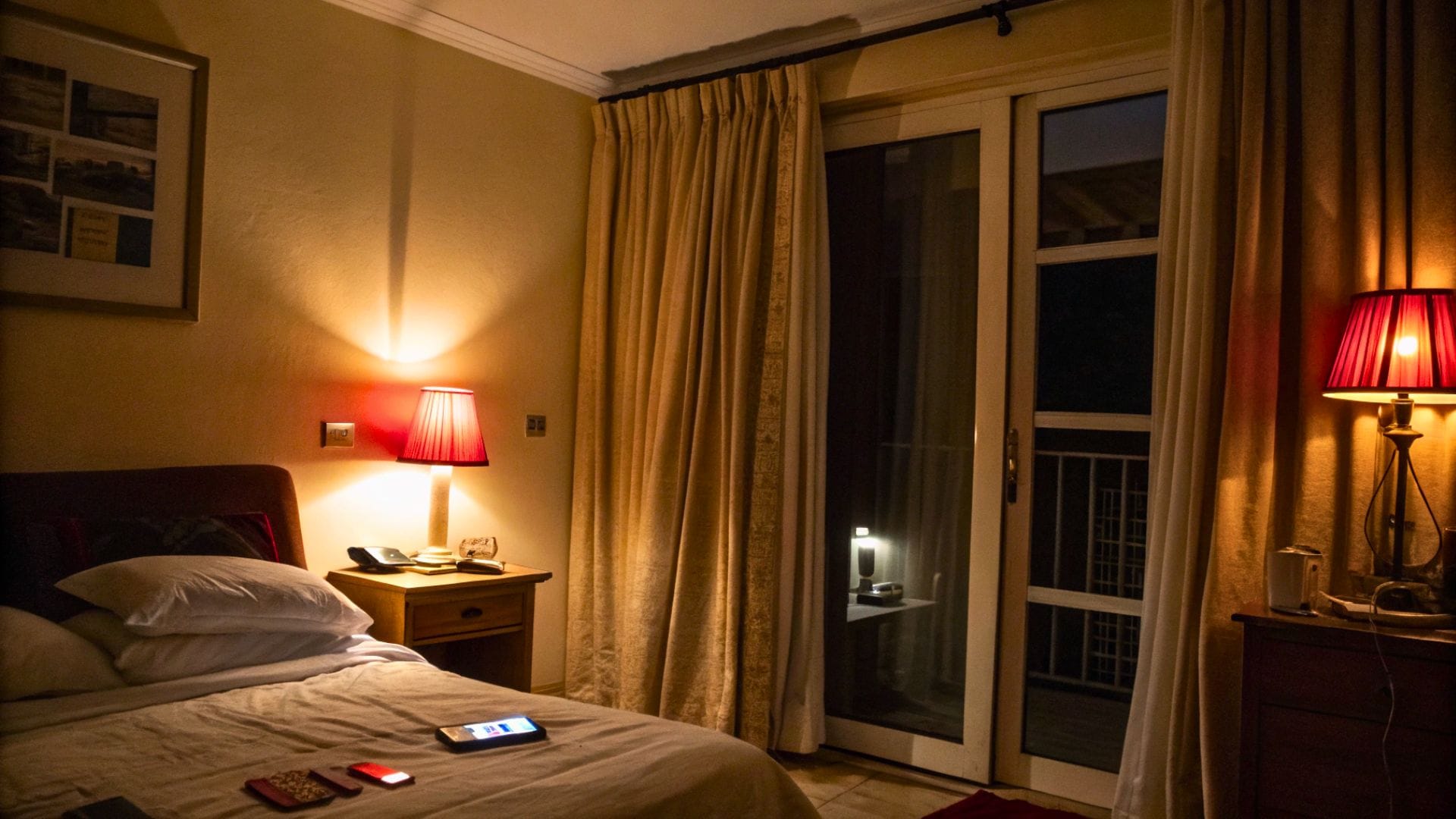
3. Optimize Your Mattress and Pillow Setup
The Foundation of Physical Comfort
Your mattress and pillow configuration directly impacts your spine alignment, pressure point relief, and overall physical comfort throughout the night. An unsuitable mattress can cause chronic pain, frequent position changes, and fragmented sleep, while the right setup promotes natural spinal alignment and minimizes sleep disturbances.
The “best” mattress varies significantly based on your sleep position, body weight, and personal comfort preferences. Side sleepers typically benefit from softer surfaces that contour to hip and shoulder curves, while back and stomach sleepers often prefer firmer support to maintain proper spinal alignment.
Practical Implementation:
- Evaluate your current mattress: if it’s over 8 years old or causing discomfort, consider replacement
- Choose firmness based on sleep position: soft to medium for side sleepers, medium to firm for back sleepers, firm for stomach sleepers
- Select pillows that maintain neutral neck alignment: thicker for side sleepers, medium for back sleepers, thin for stomach sleepers
- Consider a mattress topper for fine-tuning comfort without full replacement
- Invest in quality pillowcases made from breathable materials
- Replace pillows every 1-2 years for optimal support and hygiene
Don’t overlook the importance of a quality bed frame and foundation—they provide crucial support for your mattress and can significantly impact its longevity and performance.
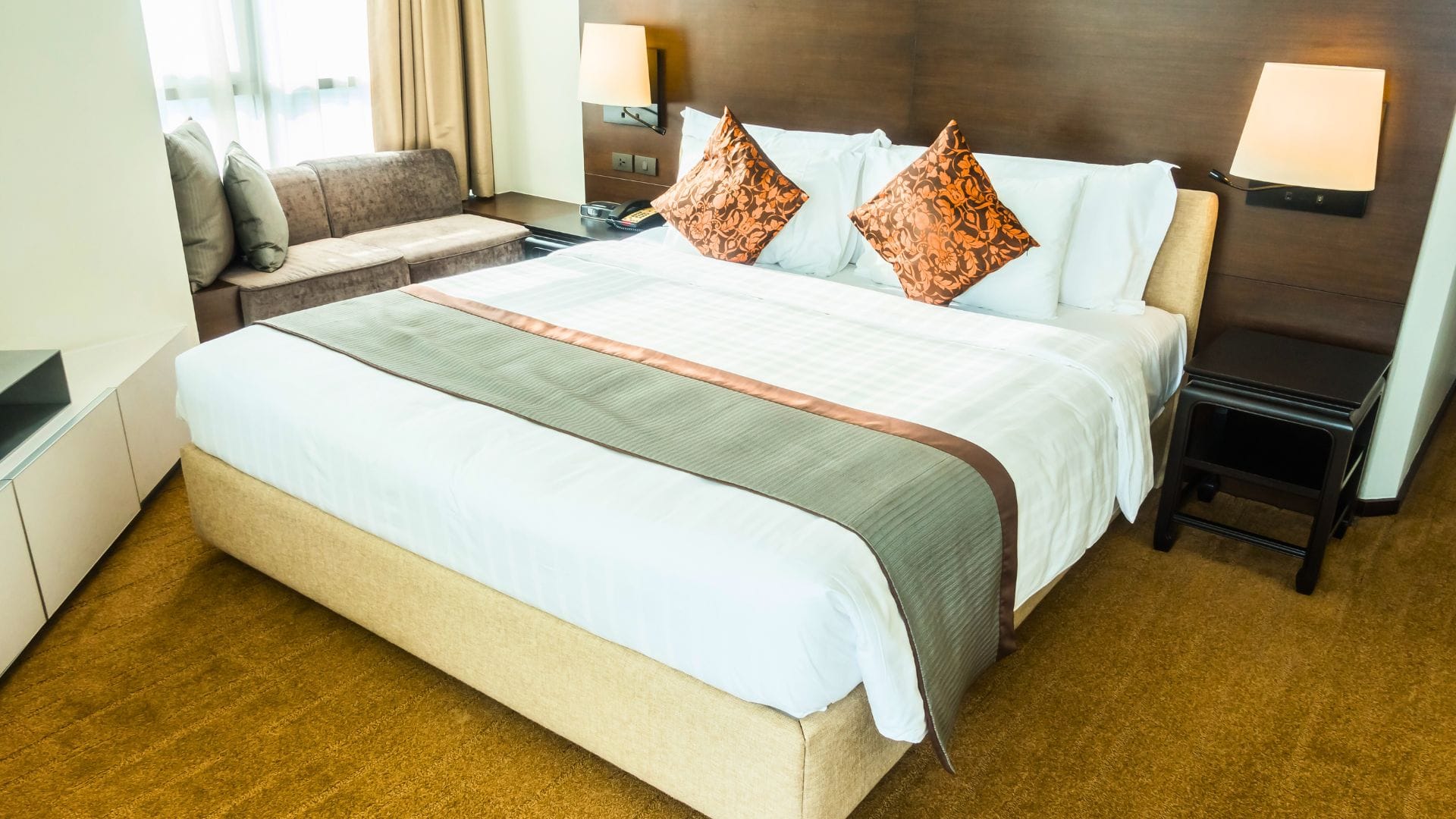
4. Eliminate Noise Disruptions and Sound Pollution
Creating Your Personal Sound Sanctuary
Sound disturbances are among the most common culprits behind fragmented sleep. Even if noise doesn’t fully wake you, it can prevent you from reaching deeper sleep stages essential for physical restoration and mental clarity. Your ears continue processing sounds even during sleep, making noise control crucial for maintaining consistent sleep cycles.
The goal isn’t necessarily complete silence—some people sleep better with consistent, gentle background sounds that mask sudden noise variations. The key is controlling your acoustic environment to minimize disruptive sound fluctuations.
Practical Implementation:
- Identify and address noise sources: creaky floors, rattling windows, outside traffic, or household appliances
- Use soft furnishings like thick curtains, area rugs, and upholstered furniture to absorb sound
- Install weatherstripping around doors and windows to reduce external noise infiltration
- Consider a white noise machine, fan, or app to create consistent background sound
- Use high-quality earplugs designed for sleeping if other methods aren’t sufficient
- Communicate with family members or roommates about quiet hours
For couples, consider separate sleep schedules if one partner’s snoring or movement patterns consistently disrupt the other’s sleep. Sometimes temporary sleeping arrangements can help both partners achieve better rest.
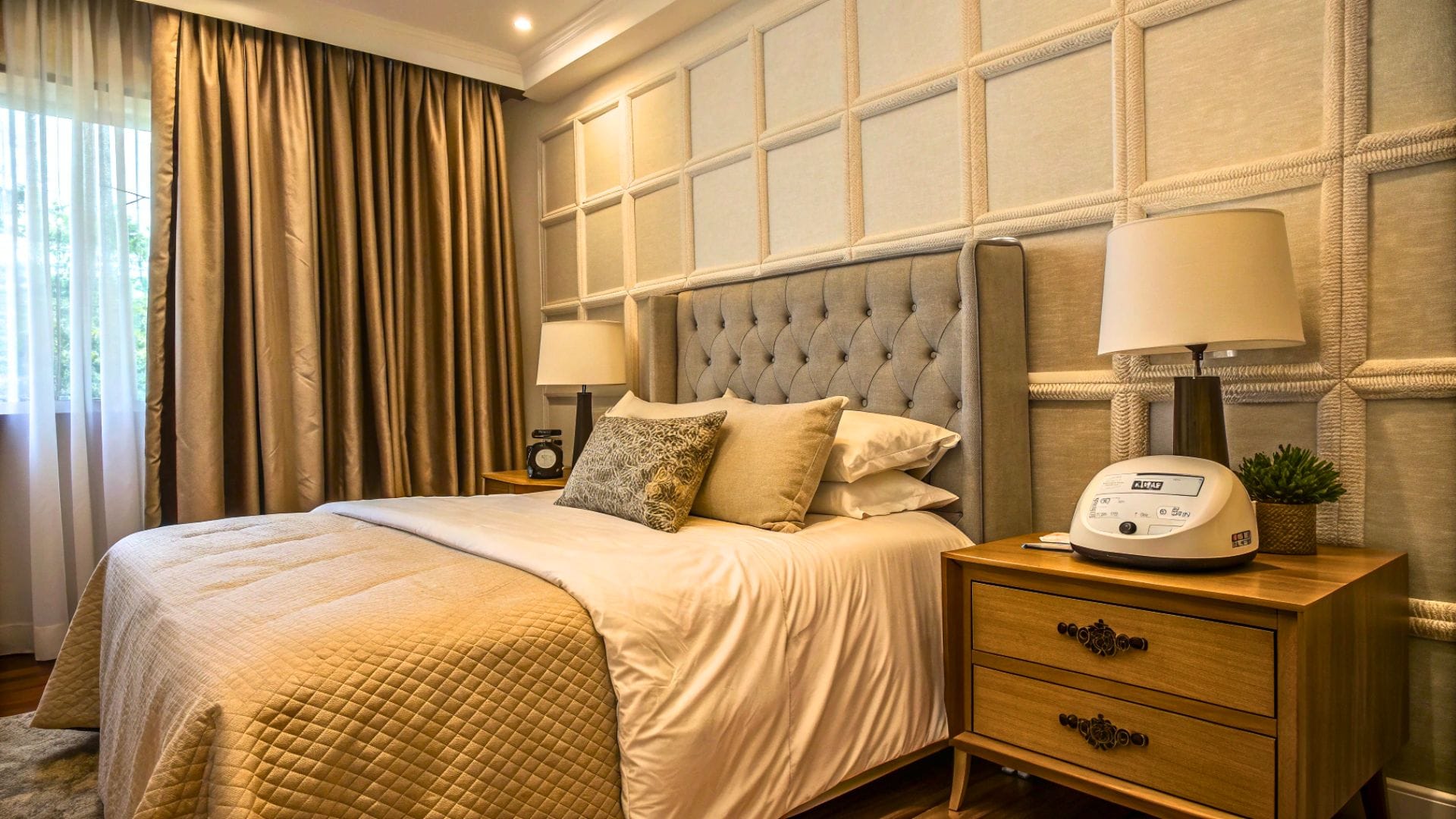
5. Maintain Optimal Air Quality and Ventilation
Breathing Easy for Better Sleep
Air quality significantly impacts sleep quality, yet it’s often overlooked in bedroom optimization discussions. Poor ventilation can lead to increased carbon dioxide levels, reduced oxygen availability, and the accumulation of allergens and pollutants—all of which can disrupt your sleep cycles and leave you feeling groggy upon waking.
Fresh, clean air promotes better oxygen circulation to your brain and muscles during sleep, supporting the restoration processes that occur during deep sleep stages. Additionally, proper humidity levels (between 30-50%) help maintain comfortable breathing and prevent issues like dry throat or congested sinuses.
Practical Implementation:
- Crack open a window slightly for fresh air circulation, weather permitting
- Use an air purifier with HEPA filtration to remove allergens, dust, and pollutants
- Maintain humidity levels with a humidifier in dry climates or a dehumidifier in humid areas
- Change HVAC filters regularly to ensure clean air circulation
- Keep houseplants known for air purification, such as snake plants or peace lilies
- Vacuum and dust regularly to minimize allergen accumulation
- Wash bedding weekly in hot water to eliminate dust mites
Be mindful of potential air quality disruptors like scented candles, air fresheners, or cleaning products used near bedtime, as these can trigger sensitivities in some individuals.
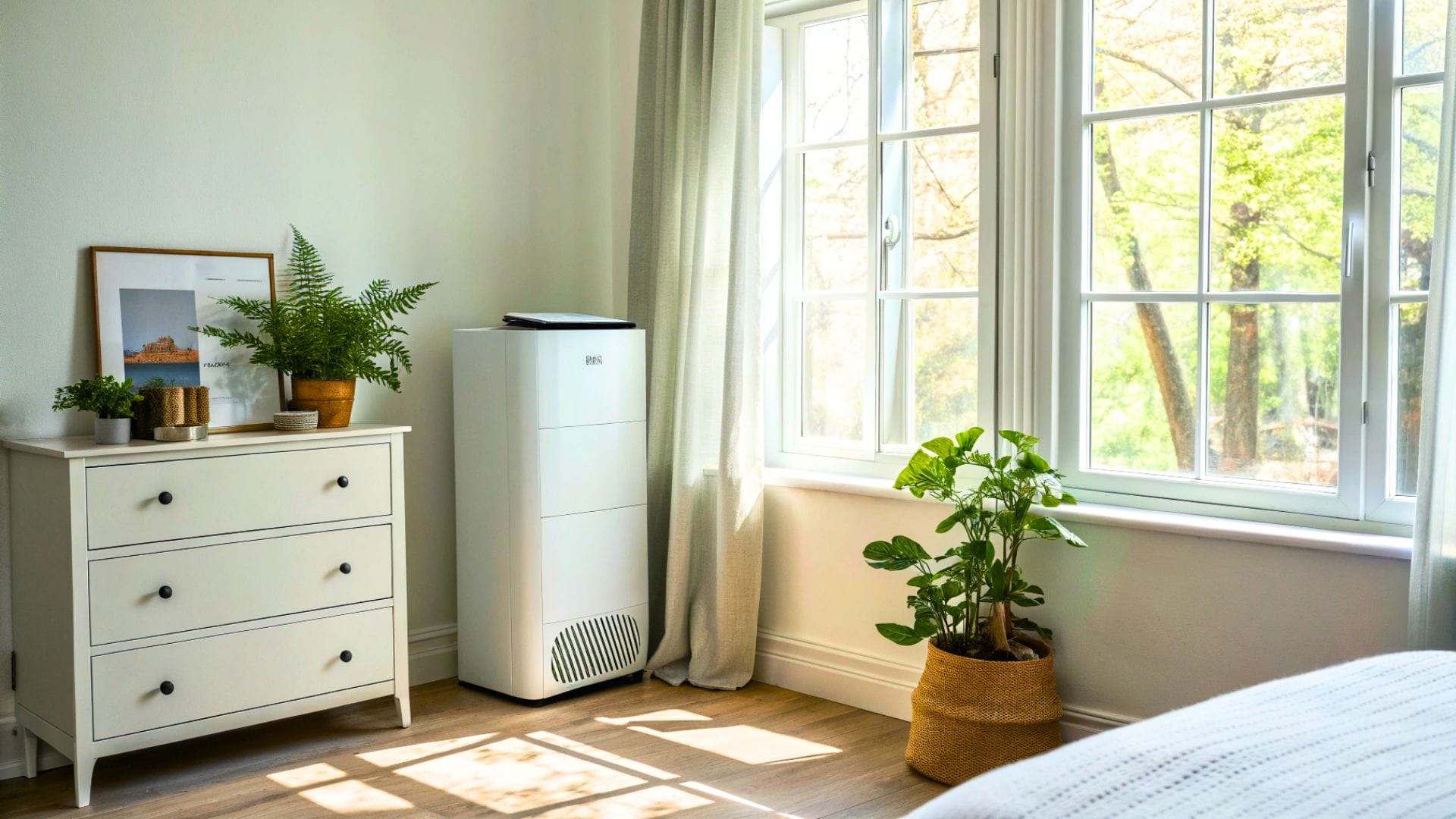
6. Design a Clutter-Free, Calming Sleep Environment
The Psychology of Peaceful Spaces
Your bedroom’s visual environment has a profound psychological impact on your ability to relax and transition into sleep mode. Clutter, work materials, and overstimulating décor can keep your mind active when it should be winding down, while a clean, organized space promotes mental calmness and signals to your brain that it’s time to rest.
The concept of sleep hygiene extends beyond physical comfort to include mental and emotional preparation for sleep. Your bedroom should serve as a dedicated sanctuary for rest and relaxation, free from reminders of daily stressors and responsibilities.
Practical Implementation:
- Remove work-related items, including laptops, paperwork, and office supplies
- Organize belongings with adequate storage solutions to maintain clear surfaces
- Choose calming color schemes: soft blues, gentle greens, warm neutrals, or muted earth tones
- Limit decorative items to a few meaningful pieces that promote tranquility
- Create designated spaces for items like books, water, and other bedtime essentials
- Use soft, natural textures in bedding, curtains, and accessories
- Establish a nightly tidying routine to maintain the peaceful environment
Consider incorporating elements that engage your senses positively: a small essential oil diffuser with lavender, soft textures you enjoy touching, or a few books that help you unwind without overstimulating your mind.
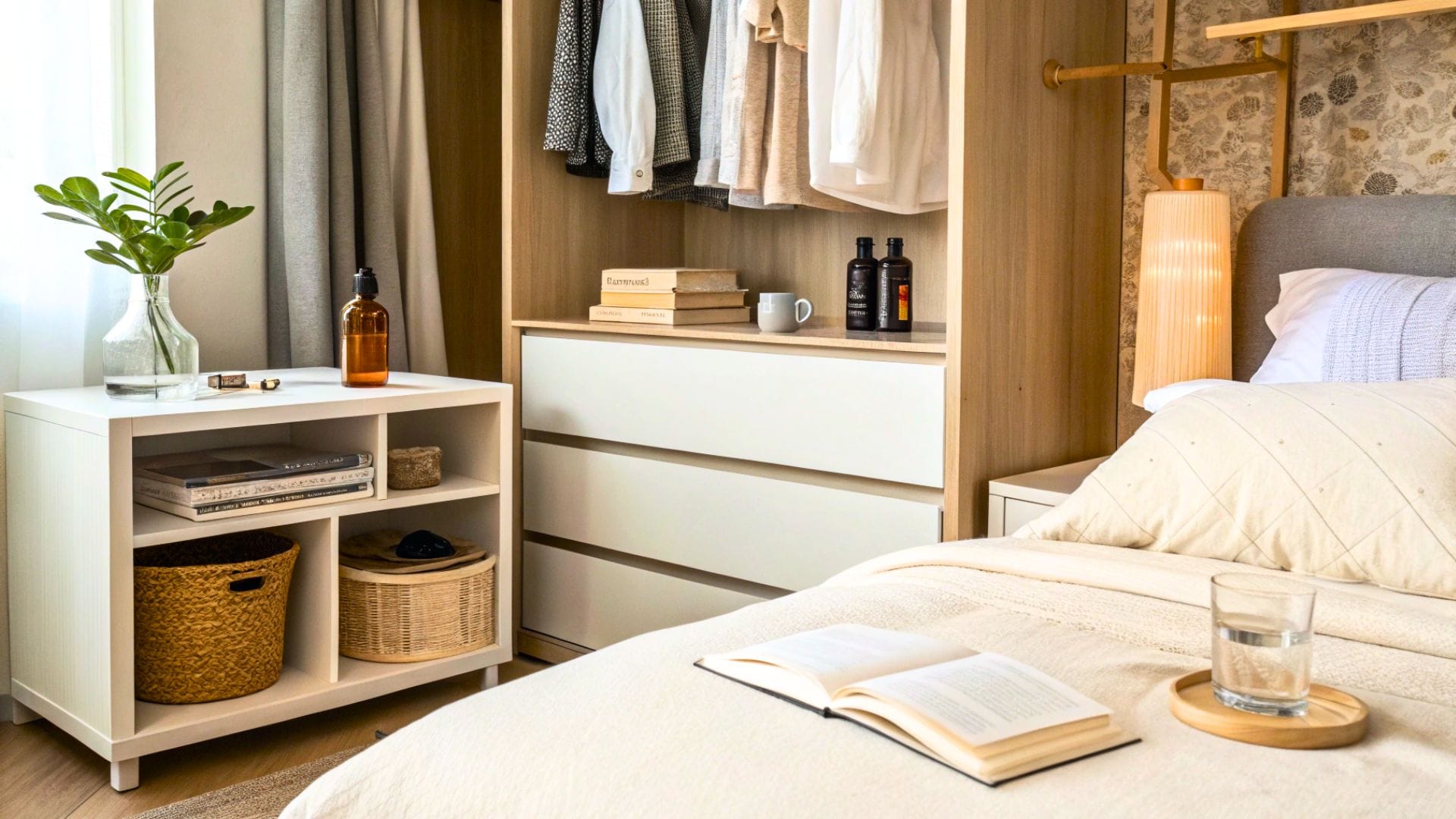
Conclusion: Your Path to Refreshing Sleep Starts Tonight
Transforming your bedroom into a sleep optimization powerhouse doesn’t require a complete overhaul—small, strategic changes can yield dramatic improvements in your sleep quality. Start by implementing one or two of these evidence-based strategies, then gradually incorporate the others as you notice improvements in your nightly rest.
Remember, achieving consistently refreshing sleep is an investment in your overall health, productivity, and quality of life. The time and effort you spend optimizing your bedroom environment will pay dividends in increased energy, improved mood, and better physical health.
Quality sleep isn’t a luxury—it’s a necessity for optimal human functioning. By taking control of your bedroom environment and implementing these six key optimization strategies, you’re taking a powerful step toward the refreshing, restorative sleep your body and mind deserve. Sweet dreams await in your newly optimized sleep sanctuary.

